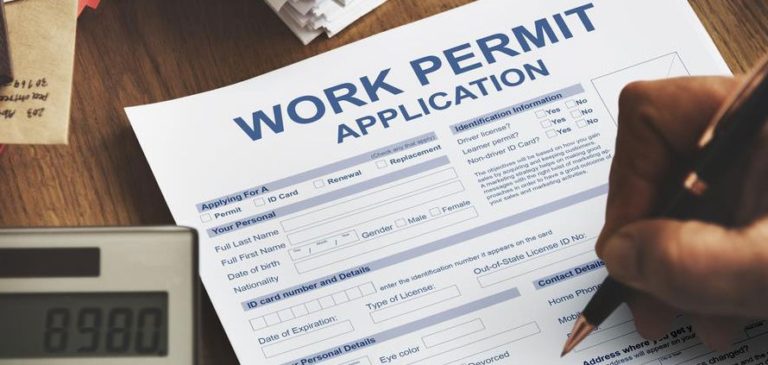The United States is one of the most popular countries for work and career development. Many people dream of being able to work in the U.S. and benefit from attractive conditions, high wages and professional opportunities. However, in order to get the opportunity to work in the United States, you need to get acquainted with the different types of work visas that are granted in the country.
The Immigration Service plays a pivotal role in facilitating the movement of people across borders while ensuring compliance with immigration laws and regulations. It serves as a gateway for individuals seeking to enter a new country for various reasons such as work, study, or asylum. Beyond processing visas and permits, the Immigration Service is tasked with safeguarding national security by screening entrants for potential threats and criminal backgrounds. Moreover, it plays a crucial role in managing and integrating diverse populations, contributing to the cultural and economic tapestry of the host nation. Through its policies and practices, the Immigration Service shapes societal dynamics and reflects the values of inclusivity, fairness, and security in a globalized world.
The H-1B visa is one of the most popular working visas in the United States. It is designed for highly qualified professionals, workers with special skills and specialists in specific fields such as information technology, engineering, science and medicine. A H-1B visa requires a sponsor employer who must provide you with a job offer and submit a petition to the USCIS (U.S. Citizenship and Immigration Service).
The H-2B visa provides an opportunity for temporary employment in the U.S. in non-agricultural seasonal industries such as hotel business, restaurants, construction, etc. Workers who come on a H-2B visa can work in the U.S. for a specified period, after which they usually return to their home country. To obtain a H-2B visa, you must have a job offer from a U.S. employer and confirm that the job is seasonal and temporary.
The H-2A visa provides an opportunity for temporary employment in the U.S. in agricultural seasonal industries. Workers coming on a H-2A visa can engage in agricultural work such as harvesting, horticulture and livestock farming. It allows employers to compensate for the temporary shortage of labour in agriculture. To obtain the H-2A visa, you must have a job offer from an American agricultural employer and ensure that the requirements related to seasonality and temporary work are met.
The L-1 visa is intended for employees of international companies who are transferred to U.S. branches or subsidiaries. It allows senior management or specialized level employees to move to the U.S. and work within the company on a permanent basis. To obtain an L-1 visa, you must be qualified and confirm belonging to a company that has branches or subsidiaries in the United States.
The O visa is intended for individuals with extraordinary abilities in science, arts, sports, business and other fields. To obtain an O visa, you need to prove that you have outstanding skills or achievements that stand out among other professionals in your field.
The P visa is a non-immigrant work visa intended for professional athletes and artists who are internationally renowned. It is issued to both individuals and teams who come to the United States to perform at sports competitions or to participate in events.
E visas, including E-1 and E-2 visas, are intended for foreign investors and entrepreneurs who wish to conduct business in the United States. The E-1 visa is intended for individuals from countries that have a trade agreement with the United States, which allows to import and export goods or services between the U.S. and their country. The E-2 visa (investor visa) provides an opportunity to invest in and manage American business. To obtain an E visa, you must confirm the existence of an active and significant business or investment in the United States.
The EB-1 visa (first priority visa) is an immigration visa designed for outstanding personalities in a variety of fields such as science, art, sport, business and education. To obtain an EB-1 visa, you must confirm your extraordinary status and national or international recognition in your area. To do this, you can provide evidence of outstanding achievements, recognition of industry experts, availability of awards, publications, speeches at international conferences, etc.
The EB-2 visa (second priority) is intended for professionals with higher education and individuals with special skills. To obtain an EB-2 visa, you must have advanced professional qualifications, higher education or special skills that are inherent to a particular field of work.
The EB-3 visa (third priority) is intended for professionals, workers and workers with the necessary qualifications. This visa is available to individuals with professional qualifications, graduates of technical or professional educational institutions, as well as for workers with skills that are required in the U.S. labour market.
The EB-4 visa (fourth priority) is intended for special immigrants, including religious workers, employees of international organizations, government employees and other special categories.
The EB-5 visa (fifth priority) is a visa for investors. It allows you to earn a green card by investing in new commercial firms, generating jobs, and growing the US economy.
The J-1 visa allows you to take part in cultural and educational programs in the United States, such as internships, exchanges, and research projects. A sponsor who arranges and supports your program is required for a J-1 visa.

